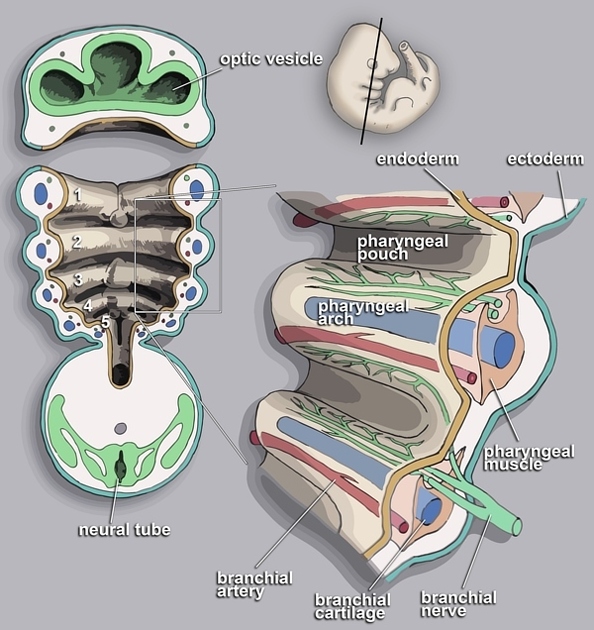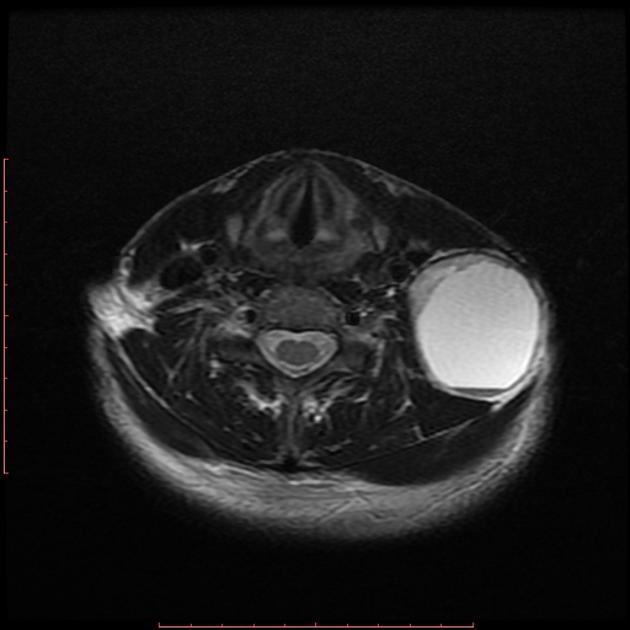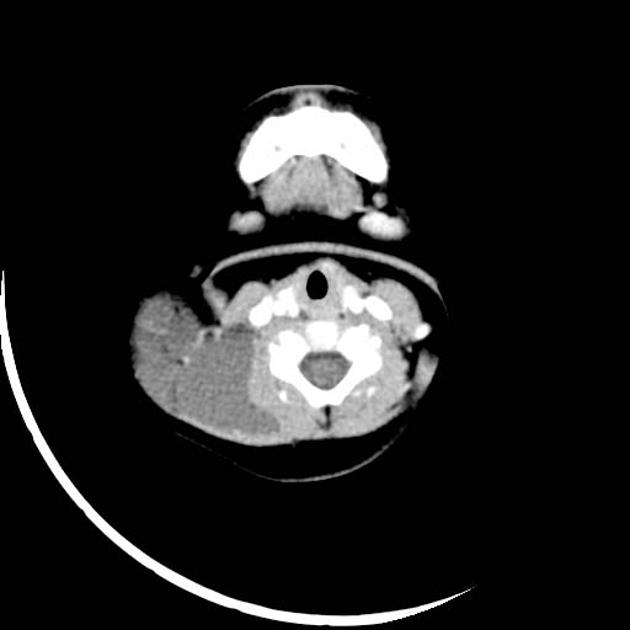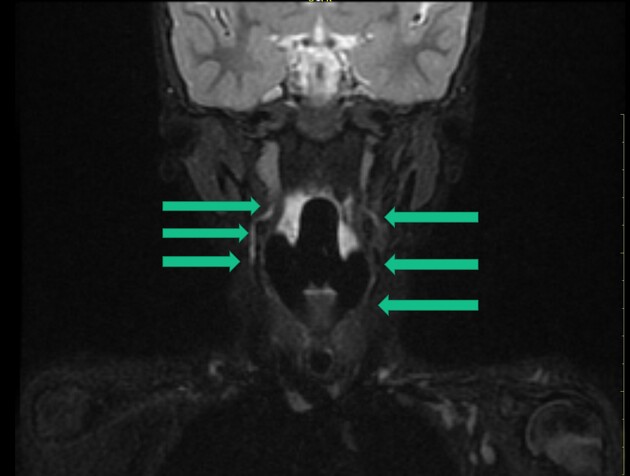Third branchial cleft cysts are a very rare type of branchial cleft cysts. Although they are extremely rare, they remain the second most common congenital lesion of the posterior cervical region after cervical lymphatic malformations or cystic hygromas 3.
On this page:
Pathology
Third branchial cleft cysts arise from the abnormal development of the third pharyngeal cleft (see branchial apparatus).
Location
By definition, a third branchial cleft cyst must lie posterior to the common or internal carotid artery, between the hypoglossal nerve below and the glossopharyngeal nerve above 4. Cysts may occur anywhere along the course of the third branchial cleft or pouch. Most third branchial cleft cysts tend to lie in the posterior cervical space, posterior to the sternocleidomastoid muscle 5.
Radiographic features
They are typically located in the posterior cervical region. Occasionally cysts can have retropharyngeal extension 1. The proximity of the third and fourth branchial arches makes distinguishing 3rd from 4th branchial cleft abnormalities radiologically difficult (for accurate diagnosis, the relationship of the sinus tract to the superior laryngeal nerve must be determined surgically). If they form a sinus, the sinus tract will drain into the pyriform sinus.
Ultrasound
Uncomplicated branchial cleft cysts are anechoic on ultrasound, but infection and hemorrhage will increase echogenicity.
CT
An uncomplicated cyst may be seen as a fluid-attenuating, typically unilocular, well-marginated mass lesion. The cysts typically displace adjacent structures, but fascial planes are preserved unless there has been a biopsy or an infective complication.
MRI
As with other imaging modalities, they are usually well defined. Can demonstrates variable cyst wall thickness.
Signal characteristics of the contents of the cysts are:
T1: usually hypointense to muscle but in the presence of proteinaceous debris can be hyperintense
T2: hyperintense to muscle
T1 C+ (Gd): infected cysts can have rim enhancement
Treatment and prognosis
Definitive treatment of third branchial cleft cysts is surgical excision 3.
During surgery, the relationship of the sinus tract to the superior laryngeal nerve and the pyriform sinus is useful to differentiate between third and fourth branchial cleft cysts, and the favored approach is along the sternocleidomastoid muscle ref.
Differential diagnosis
Imaging differential considerations include:
-
for uncomplicated cysts
-
can be almost impossible to differentiate on imaging
-
-
for infected cysts
cystic neurogenic tumors - e.g. cystic schwannoma (rare) 7









 Unable to process the form. Check for errors and try again.
Unable to process the form. Check for errors and try again.